Orchard Audio is an American audiophile company based in New Jersey, where its products are designed and assembled with its owner and product designer, Leo Ayzenshtat. Orchard Audio could be described as a fan-favorite, direct-to-the-consumer audio manufacturer that focuses on high-quality parts and execution, with a priority of performance over profits. The Orchard Audio PecanPi+ streaming DAC (streamer and DAC combination unit), with an MSRP of $799.95 to $989.95, is a classic example of this philosophy and the topic of this review. Orchard Audio offers a second streaming audiophile DAC, the PecanPi ($599.95-789.95), with a $200 lower price range due to the implementation of a different DAC chipset: the lower-priced base PecanPi uses Burr-Brown, while PecanPi+ uses semiconductors from AKM. Since Orchard Audio generously provided both models for audition, we will compare them in the listening section of this article.
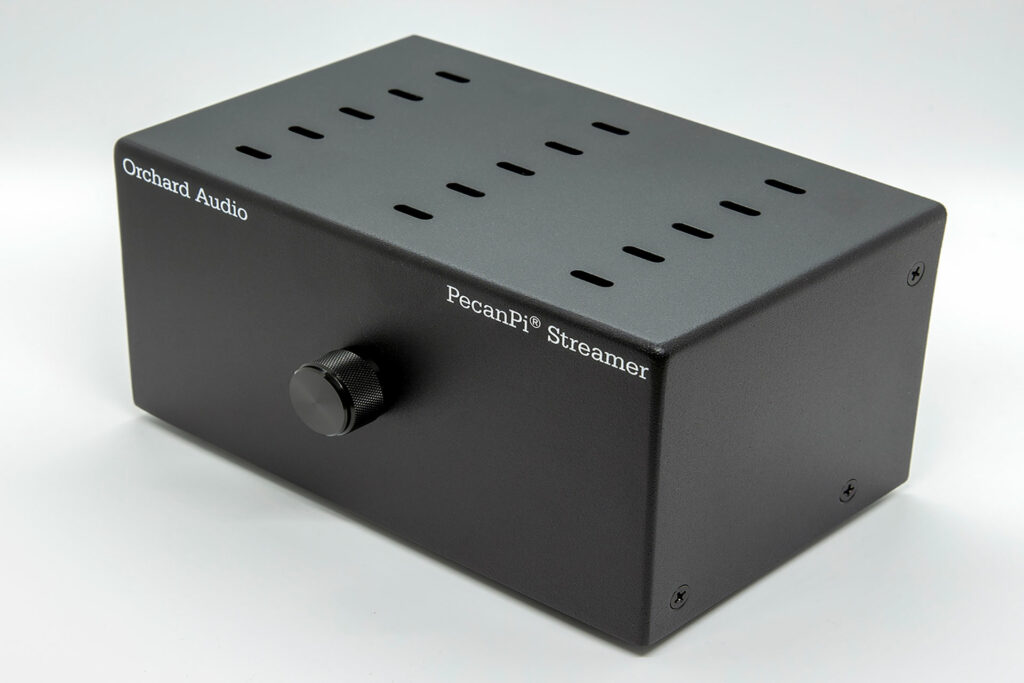
I have discussed the PecanPi+ previously in a recent review of the Eversolo DMP A6, (read the review) where I was fortunate to have three streaming DACs from which to perform a hands-on comparison to the DMP A6. In that review, I confessed that the Eversolo DMP A6, its technological cousin, the DMP A6 Master Edition, and the Bluesound Node (read the review) all had an undiscernible audio quality, with the Orchard Audio PecanPi+ reigning supreme, but did not go into detail as to what exactly I was hearing, saving my experiences for this complete review here.
I will go into more detail about the performance of the Orchard Audio PecanPi+, how it compares to the PecanPi base unit, and the streaming DACs from Eversolo and Bluesound. But first, let’s unpack the features and configuration of the Orchard Audio PecanPi+, how a small audiophile-centric consumer electronics company outperforms more prominent mass-produced manufacturers, the pros and cons of the PecanPi+ and, along the way, discover which streaming DAC makes the most sense for you.
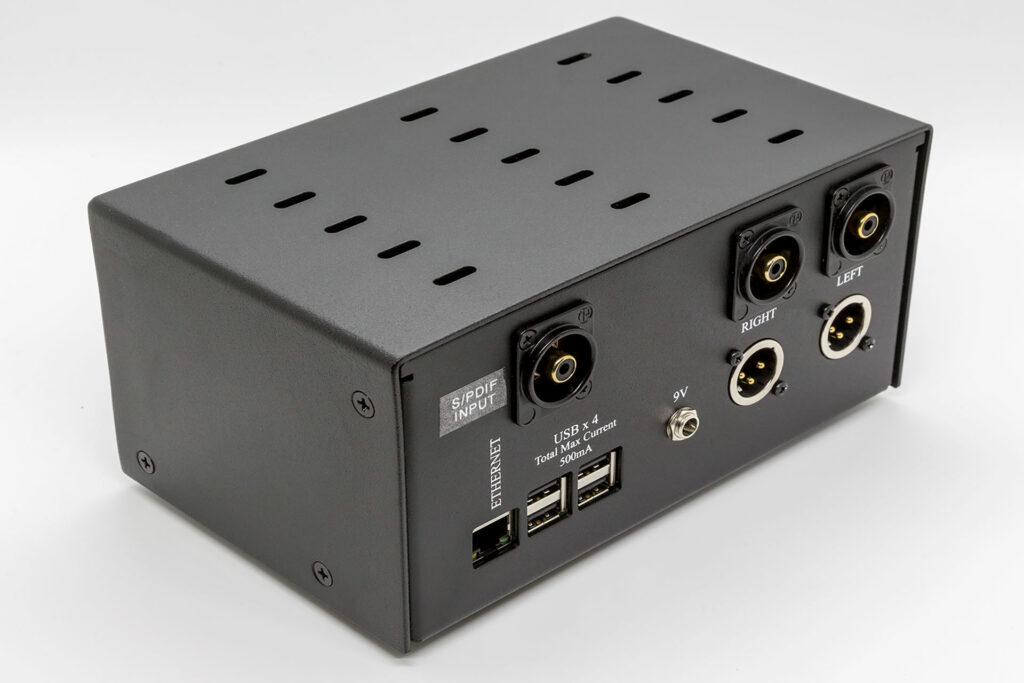
What Makes the Orchard Audio Pi+ Streamer So Special?
- The PecanPi+ uses a top-of-the-line DAC chipset implementation from AKM’s VelvetSound Verita product line, model 4499EXEQ, and the 4191EQ companion chip.Both AKM chips in this design work together for digital to analog conversion.
- The Orchard Audio PecanPi+ uses the well-known Raspberry Pi 3 single-board computer with a choice of operating systems.
- The PecanPi+ has four operating systems available at purchase: Volumio, RoPieee/Roon, PiCorePlayer, and MoOde Audio. PiCorePlayer and MoOde Audio are more of a Do It Yourself (DIY) software for those inclined for that experience. That leaves Volumio and RoPieee/Roon for more consumer-oriented audio enthusiasts.
- Volumio, based in Italy, offers a familiar streaming interface that provides audio processing, music management, and a mobile app to manufacturers of streamers who use the Raspberry Pi computer, i.e., Orchard Audio. A free basic subscription is available that will perform the most desired functions. There is a premium version at an annual cost of $80 for enhanced features, including Qobuz and Tidal integrations. I cannot comment on using Volumio, since my PecanPi+ did not come with this interface.
- Orchard Audio offers the RoPieee/Roon audio processing and music management operating system at the time of purchase, which is for audio enthusiasts planning on or already set up with Roon. RoPieee and the Roon app include several streaming service integrations, most importantly Tidal and Qobuz integrations.
- The Orchard Audio PecanPi+ includes a S/PDIF digital input to allow other digital audio sources in, such as a silver disc transport.
- The Orchard Audio PecanPi+ comes with fully balanced analog XLR outputs as standard, with an option to add a set of RCA analog outputs for $75. Users can use both analog outputs to connect to a preamplifier or headphones. A dedicated quarter-inch headphone output can replace the RCA outputs for $95.
- Proprietary jitter removal and DAC analog filter circuits are unique to the Orchard PecanPi+ design. How a company deals with jitter is another strong factor as to why one DAC sounds different than another. Jitter isn’t good. Getting rid of it can be tricky, complicated and/or expensive.
- The Orchard Audio PecanPi+ uses linear internal power supplies for optimal DAC performance. The power supply on today’s digital products is one of the biggest factors in the overall performance and sound, and Orchard delivers on this important design element.
- All digital music file formats are compatible with bit rates up to 32 and sampling rates up to 384 kHz.
- Preamplifier functionality allowing direct connection to your amplifier(s) with volume control is a valuable feature for aspiring audio enthusiasts on a budget.
Why Should You Care About the Orchard Audio PecanPi+ Streaming DAC?
The Orchard Audio PecanPi+ Streaming DAC is for the audiophile in the know who prioritizes high-quality parts, proprietary design, and engineering over a mass-produced design. For Roon subscribers with a Roon Server/Core in place, or who wish to obtain one, the PecanPi+ offers an out-of-the-box solution and a high fidelity path with performance substantially over its price point. The PecanPi+ provided to me for this review was outfitted with RoPieee software to work with the Roon App. Alternatively, the PecanPi+ can be configured with the Volumio software and interface, including popular streaming service integrations without Roon. Regardless of which way you decide to go, the Orchard Audio PecanPi+ can support your needs.
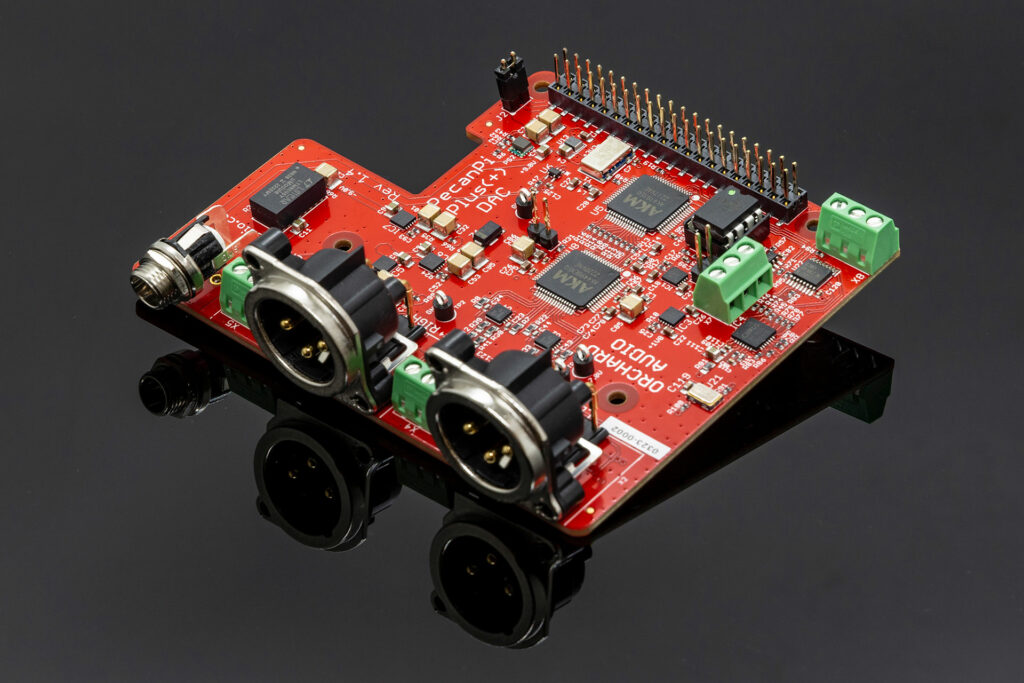
Some Things You Might Not Like About the Orchard Audio PecanPi+ Streamer/DAC…
- Orchard Audio isn’t a household name in audiophile streamers like, say, BlueSound or Sonos, but the seven-year-old company has been making a streamer product for six of their seven years.
- Although the Orchard Audio PecanPi+ is built solidly in a steel case, its utilitarian industrial design may not have a broad appeal the way some of its competitive counterparts do. The unit has that Parts Express DIY feel, which is why the price is so low. A sexy LED screen is coming on a future upgraded model, but for more money.
- WIFI is not included with the Orchard Audio PecanPi+, as it prioritizes a wired ethernet connection for higher performance. Orchard Audio suggests using wireless router extenders that provide a wired ethernet output and the PecanPi+ as an alternative path.
- The Orchard Audio PecanPi+ requires the consumer to know precisely how they intend to stream music, and choose an interface accordingly at the time of purchase. Requiring the consumer to commit to a streaming path could be problematic and prevent the consumer from growing into this hobby.
Listening To the Orchard Audio PecanPi+…
The Orchard Audio PecanPi+ streamer DAC incorporated into my reference audio system, consisting of a Pass Labs XP 22 preamplifier, wired to a set of Pass Labs XA60.8 high-current monoblock amplifiers, operating in full Class-A mode up to 60 watts at eight ohms, doubling power at four ohms, and again at two ohms. Focal Kanta No. 2 floorstanding speakers would be the final stage of my system, creating a highly resolving platform from which the Orchard Audio PecanPi+ can show off its capabilities. The system benefits from Wireworld Eclipse 8 speaker cables, interconnects, and Electra 7 power cables for the amplifiers. As previously mentioned, RoPieee/Roon was the interface of choice, requiring a Roon server, which was a MacBook Pro, in conjunction with Tidal streaming services. The music selections outlined below are the same ones used in the review of the Eversolo DMP A6 because, frankly, I performed all listening sessions with these streaming DACs together, and it allows for a good point of reference. One last point: all of the streamers used in this comparison were connected through Roon to create a relevant environment.
The song from Joni Mitchell “Both Sides Now” from her Clouds album is straightforward, with a simple acoustic guitar compilation and a single female vocal. While the audio presentation was familiar, as with previous streaming DACs that have passed through my room, the PecanPi+ demonstrated the ability to produce a natural bloom to guitar strings with an authentic airy decay that lightly showered my listening space, breathing life into the track. Additionally, the PecanPi+ had noticeable increased depth, bellowing from the main body of the guitar and strings and a deeper midrange that created a superior presentation to the Eversolo or Bluesound streaming DACs. The standard PecanPi had a similar “cut from the same cloth” presentation compared to the PecanPi+, but did not convey the same intensity and delicacy.
On the song “Sultans of Swing” by Dire Straits from their remastered eponymous album, which offered a more complicated musical ensemble than the previous track, the Orchard Audio PecanPi+ displayed an amazingly silent background, creating a perfect black backdrop to project instrumentation and vocals. Imaging and soundstage were excellent, placing vocals and instruments in logical locations, but with more three-dimensionality than the Eversolo and Bluesound streaming DACs. The base PecanPi continued to show off a similar signature to PecanPi+ sound quality, but not quite as sophisticated. Nor did the PecanPi offer the same prominent midrange finesse as the Pi+. Yet, it performed a notch above the Eversolo and Bluesound streaming DACs.
Rodrigo y Gabriella, the song “Hanuman” from their 11:11 album, displayed a level of warmth on guitar strings when played on the PecanPi+ that did not exist with the Eversolo and Bluesound streaming DACs. The midrange sounded excellent, with enhanced bass superior to the Eversolo, Bluesound and PecanPi. However, the PecanPi continued to best the Eversolo and Bluesound streaming DACs, and was able to get closer to the quality of its more esteemed brother, showcasing similar depth and transparency, along with a similar dynamic range. As with the previous tracks, the PecanPi+ continued to showcase extended realism with reverberations of the guitar strings from the guitar’s main body, providing better soundstage depth and width, which created a better three-dimensional image. Ultimately, I preferred the PecanPi+, with the base model Orchard Audio PecanPi coming in second. The remaining streaming DACS trailing further behind in a close-knit pack.
Will the Orchard Audio PecanPi+ Streamer/DAC Hold Its Value?
The Orchard Audio PecanPi+ will hold its value better than most streaming DACs, because it sounds fantastic and plays way beyond its price point. Before giving in to a fire sale, I would relegate the Pi+ to another room or use it as a DAC-only device when it reaches an advanced age. But let’s keep it in perspective, since all products in this category are prone to depreciation, due to quickly evolving DAC technology and implementation.
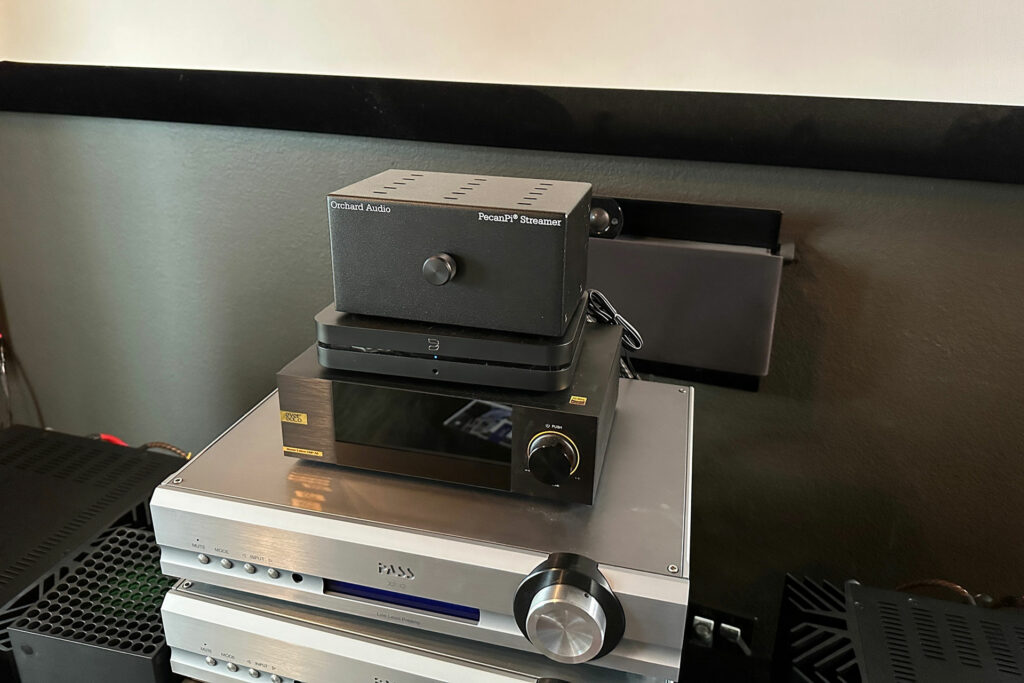
What Is the Competition for The Orchard Audio PecanPi+?
The Orchard Audio base model PecanPi, priced between $599.95 and $789.95, is an alternative to the higher-performing PecanPi+. It is an almost identical unit to the PecanPi+, with the same features in the jitter circuits and filtering. What’s different between the two units is mainly the DAC chipset and its implementation. Based on what I described in my listening session, is it worth saving $200 by sacrificing higher audio quality that can be amortized over years of enjoyment, which would translate to pennies per day? I’d say no. Go with the PecanPi+ and be happy, as the delta in price is the cost of a pair of interconnects, and you can hear the difference.
If you prioritize a specific feature over the PecanPi’s performance, consider the Eversolo or Bluesound streaming DACs (buy at Crutchfield). By now, you may be familiar with these two products, as discussed in prior reviews.
As part of my research for this review, particularly the Volumio operating system option, I discovered that Volumio makes its own streaming DAC, the Primo, with an MSRP of $899. I have not auditioned this streaming DAC, so I cannot speak to its audio performance, but it has a stylish appearance. From a specification perspective, connectivity, DAC chipset, and performance align with the streaming DACs discussed in this review.
The Cambridge Audio CXN100, with an MSRP of $1,099, is a newly-released streaming DAC replacing their CXN V2 model. It is a complete redesign, changing the DAC chip to a higher-performing ESS ES9028Q2M model for digital to analog conversion, and it operates up to 32-bit rate and 768kHz sampling rate. One of the first noticeable characteristics of this unit is the full-size audio component width, which I appreciate. It has a color screen showing album art, streaming service, and track information and streaming. The central processing unit and operating system use Cambridge Audio’s proprietary StreamMagic Gen4 module, which supports Tidal, Qobuz, and Deezer integrated into their operating system, as well as support for Spotify Connect and Tidal Connect for connection through those services’ native app, and is Roon-ready. Like many components in this segment, the CXN100 has some preamp functionality if desired. Cambridge Audio is a 50-year-old company, with a significant dealer network and customer support, making this one exciting component I have in line for review soon.
The Orchard Audio PecanPi+ Premium is a new streaming DAC on the verge of release, with an MSRP of $1,499.95, as indicated on their website at the time of this writing. The PecanPi Premium offers the same AKM DAC chipset, high-quality parts and proprietary circuits as the PecanPi+, but now with a more stylish case and color display. It also includes some standard add-on features, like the RCA analog outputs and headphone jack, now on the front panel. Given that the internal design is the same as the PecanPi+, I suspect its sonic performance aligns with the PecanPi+. It is an option to consider whether the additional expense is worth the new appearance.
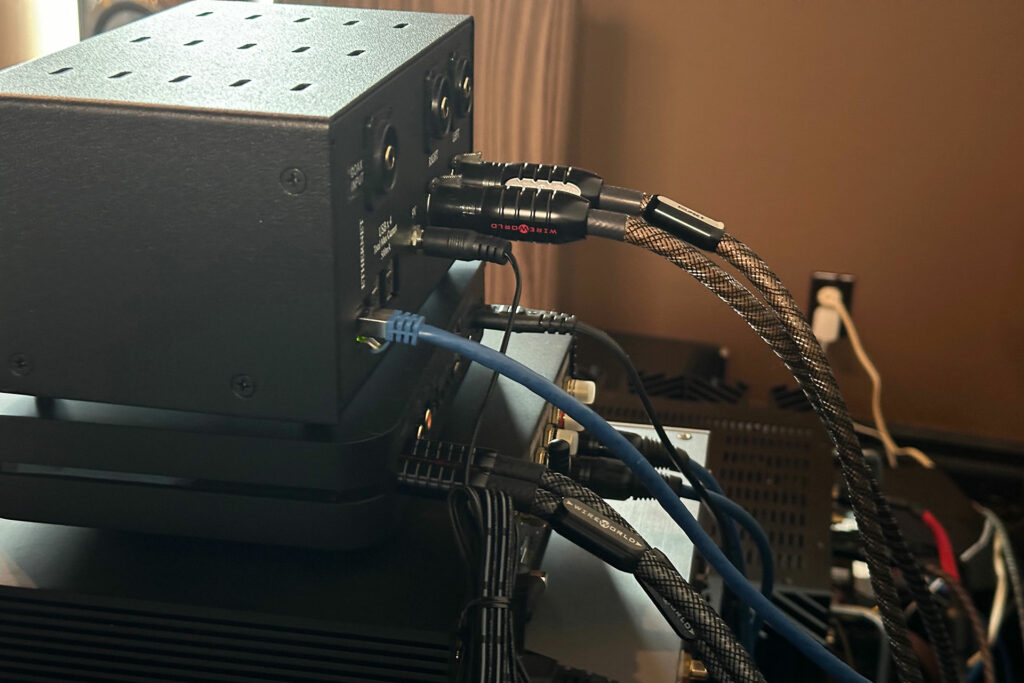
Final Thoughts on The Orchard Audio PecanPi+ Streaming DAC…
The Orchard Audio PecanPi+ is an impressive-sounding streaming DAC that prioritizes audio quality over fancy casework and features that are unlikely to ever be used. The PecanPi+’s performance outweighs any missing form factor, since audio quality is a priority for me. I have to admit, several months ago, I started to consider a streaming DAC for my personal use and wanted (and still do) every conceivable feature possible: a proper full-size audio component with a beautiful color touch-screen to act as the centerpiece of my system, with an evocative form factor capable of striking up a conversation upon first sight, integrations with every conceivable streaming service that would ensure future compatibility with connectivity galore, and of course performance that would stand my system on end. But now that I have thoroughly researched many streaming DACs and have had the opportunity to use and live with several of them over an extended period while taking a more complex look at competitive alternatives, I realize that my desires will come with a hefty price tag. A saner head prevailed as the Orchard Audio PecanPi+ reminded me of what is essential: audio performance without breaking the bank. While I struggle with the entire bucket list of original wants, something has to give. With that said, the Orchard Audio PecanPi+ hits a sweet spot with a high-value performance price proposition that is enticing. Consider what Orchard Audio PecanPi+ offers if you have the same values.




Thank you Greg and Jerry for your time and effort in completing this.